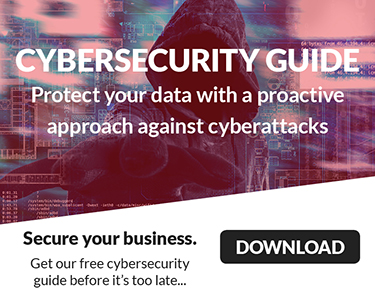
With greater connectivity, more and more companies are offering additional remote work opportunities. Reducing the impact of geographical constraints enabled assembling a greater variety of skill sets from distanced workers. For local workers, the positive effect on employee productivity, efficiency and morale has been documented. Shelter-in-place directives accelerated the efforts for companies already onboard with this effort; it forced slower adopters to quickly scramble to put something in place. While we often hear that "necessity is the mother of invention," we also know that "haste makes waste." How much planning occurred to address technical problems remote workers might face, such as computer crashes, failed apps, video conferencing, screen sharing, access to sensitive data, or even training about password management or how to avoid phishing? Skilled outsourced IT providers providing managed IT services will be able to get SMBs’ (small to medium sized businesses) remote staff infrastructure up to speed in at least four areas:
- Security tools and protocols
The Internet Crime Complaint Center (IC3) gets 1,300 daily complaints of a cybercrime from individuals and businesses. The estimated ransomware cost in the United States was $9 billion in 2019 with each demand averaging $84,000! And that's just what is reported. Cybercrime is serious. The damage is significant as measured in downtime, lost privacy, dollars, and tarnished reputation. In an office setting, antivirus software, malware protection, and secured networks are par for the course. Telecommuting requires that these types of protocols are extended and more.Sensitive data, such as business intelligence, personal account numbers or medical records must be protected to ward off liability or civil fines. Additionally, employees need to be trained to recognize phishing, establish robust password management, restrict data access and become somewhat savvy about what is shared on social media. Security awareness training reduces weak links in protocols as well as people. - Remote support and problem solving
A remote set up involves hardware, software, remote access, telecommunications, and user knowledge all firing correctly at the same time. What could go wrong? In most instances, you will not have to know, when your employees are set up correctly. However, should something go awry, you want your IT support team to have remote access to users’ workstations to resolve issues. Email down, lost passwords or inoperative laptops are all examples of matters that need urgent attention. The quicker and more completely an IT professional is able to solve a problem, the faster your employee or network is back up and running.Beyond reacting to problems, the best managed network security service anticipates issues proactively, providing training when appropriate. Much of this anticipation stems from seeing challenges across companies and industries and comparing notes with other professionals to propagate best demonstrated practices. - Support local emergencies with a distributed IT staff
There will be situations when a technician needs to physically install or access remote hardware or telecom. Having a distributed IT Support Staff, especially one with a regional, if not national, footprint can better support a company's remote employee management.Capabilities that were previously accessible to only in-office staff can now extend even to employees who are traveling. Taking "the show on the road" can sometimes be a work necessity. In the absence of face-to-face meetings, robust conferencing apps or video calls can help employees feel more connected in real-time. - 24/7 IT support team
An IT support team member available 24/7 for emergencies can get remote employees up and running more quickly. An MSP (managed service provider) has a support desk in place to answer urgent phone calls. Additionally, an MSP can assist in the planning process so that capabilities are triggered by milestone activities or on a timed roll out.
The Dynamics Behind Remote Workforce
The mid-March 2020 shutdown of New York City due to coronavirus forced many companies to reimagine how to get employees to work. The reality of the matter is "regular work-at-home has grown 173% since 2005...and nearly 47x faster than the self-employed population." From a recruitment perspective, "35% of employees would change jobs for the opportunity to work remotely full time (47% of Millennials and 31% of boomers)" [State of the American Workforce, Gallup, 2016].
From a cost perspective, estimates are "a typical employer can save an average of $11,000 per half-time telecommuter per year. The primary savings are the result of increased productivity, lower real estate costs, reduced absenteeism and turnover, and better disaster preparedness" per Global Workplace Analytics. The same source estimates "a half-time telecommuter saves the equivalent of 11 workdays per year in time they would have otherwise spent commuting. Extreme commuters save more than three times that." Think about the impact on the environment and real estate. In terms of space, Manhattan trophy offices may have up to 8 million square feet of space begging for tenants.
Given employee preferences and environmental impact, it would behoove employers to figure out how to tackle remote management. To support remote teams, consider reallocating savings towards investments that better support employee engagement with the goal of having a more productive, remote workforce; the attendant managed IT services for that inevitable migration can be better executed with thoughtful planning. As part of The Twenty, A2Z Business IT has a support network with a national footprint. Additionally, having served SMBs in Westchester County for fifteen years, we have demonstrated expertise to assure that your firm is market ready in supporting work-from-home employees. Call us at (914) 821-5660 to discuss your IT support objectives.






